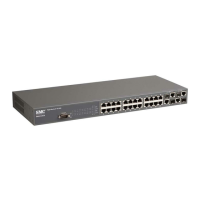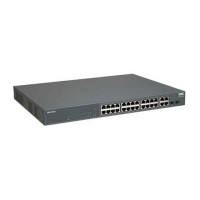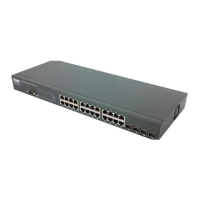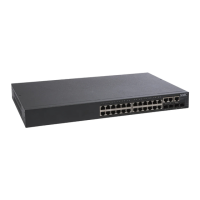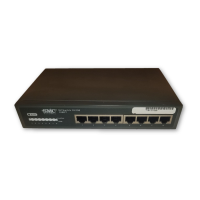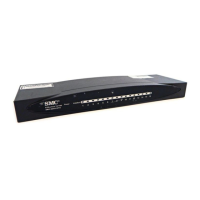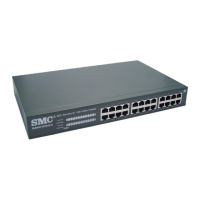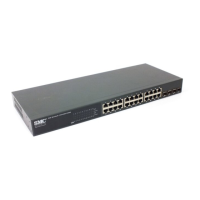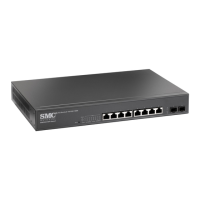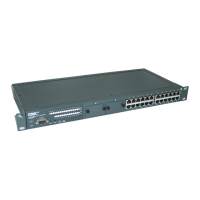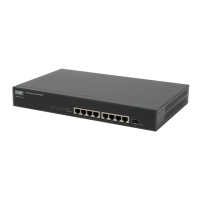C
ONFIGURING
I
NTERFACE
S
ETTINGS
10-19
By default, the system automatically detects the speed and duplex mode
used on each port, and configures the path cost according to the values
shown below. Path cost “0” is used to indicate auto-configuration mode.
• Admin Link Type – The link type attached to this interface.
- Point-to-Point – A connection to exactly one other bridge.
- Shared – A connection to two or more bridges.
- Auto – The switch automatically determines if the interface is
attached to a point-to-point link or to shared media. (This is the
default setting.)
• Admin Edge Port (Fast Forwarding) – You can enable this option if an
interface is attached to a LAN segment that is at the end of a bridged
LAN or to an end node. Since end nodes cannot cause forwarding
loops, they can pass directly through to the spanning tree forwarding
state. Specifying Edge Ports provides quicker convergence for devices
such as workstations or servers, retains the current forwarding database
to reduce the amount of frame flooding required to rebuild address
tables during reconfiguration events, does not cause the spanning tree to
Table 10-1 Recommended STA Path Cost Range
Port Type
IEEE 802.1D-1998
*
* Use the spanning-tree pathcost method command on page 29-9 to set the path cost
method.
IEEE 802.1w-2001
*
Gigabit Ethernet 3-10 2,000-200,000
10G Ethernet 1-5 200-20,000
Table 10-2 Default STA Path Costs
Port Type Link Type
IEEE 802.1D-1998
*
* Use the spanning-tree pathcost method command on page 29-9 to set the path cost
method.
IEEE 802.1w-2001
*
Gigabit Ethernet Full Duplex
Trunk
4
4
10,000
5,000
10G Ethernet Full Duplex
Trunk
2
2
1000
500
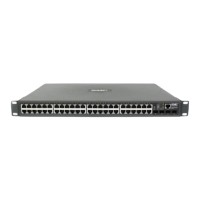
